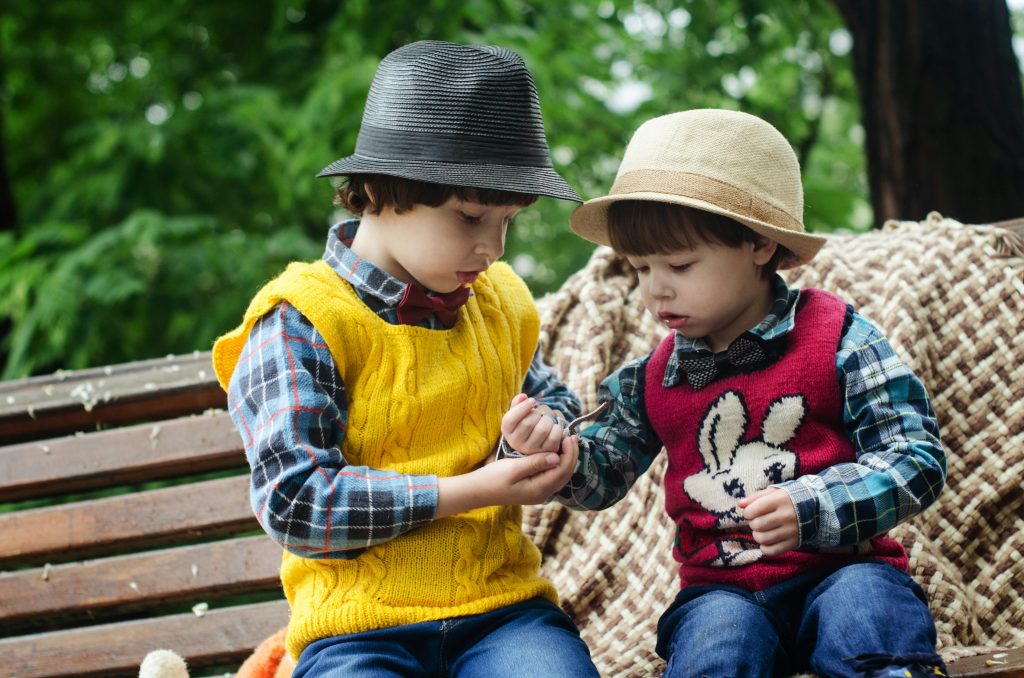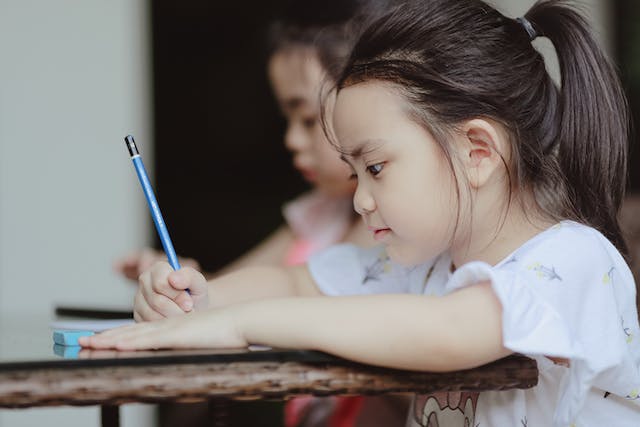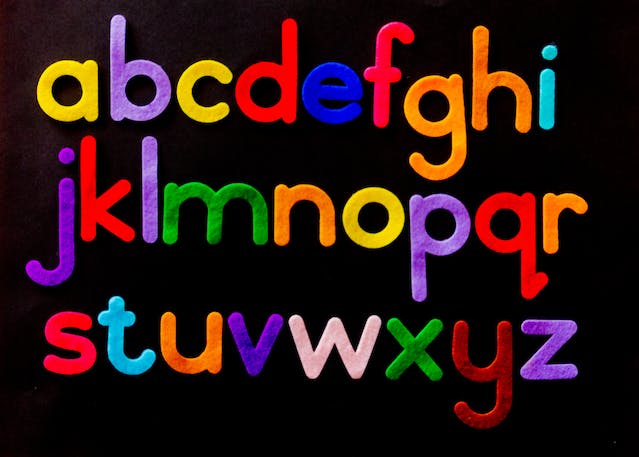: Upcycling Tips for Children’s Fashion
Sustainable fashion has become increasingly important in recent years, as people are becoming more aware of the environmental impact of the fashion industry. Upcycling, in particular, has gained popularity as a way to reduce waste and create unique and one-of-a-kind pieces. When it comes to children’s fashion, upcycling can offer numerous benefits. Not only is it cost-effective, but it also allows parents to create personalized and unique clothing for their children.
One of the main benefits of upcycling in children’s fashion is its cost-effectiveness. Children grow quickly, and their clothing often becomes too small before it is worn out. Instead of buying new clothes every few months, parents can upcycle old garments into new ones, saving money in the process. Additionally, upcycling allows parents to create unique and personalized pieces for their children. By repurposing old clothing or materials, parents can add their own personal touch and create something truly special for their little ones.
From Scraps to Style

Understanding Upcycling: What it Means and How It Works
Upcycling is the process of transforming old or discarded materials into something new and useful. It differs from recycling in that recycling breaks down materials to create new ones, while upcycling repurposes existing materials without breaking them down completely. When it comes to clothing, upcycling involves taking old garments or fabrics and transforming them into new pieces.
The process of upcycling clothing can vary depending on the desired outcome. It can involve cutting and sewing old garments together to create new designs, adding embellishments or patches to give them a fresh look, or even dyeing them to change their color. The possibilities are endless when it comes to upcycling clothing, and it allows for creativity and individuality.
Finding Inspiration: Creative Ideas for Upcycling Clothing
If you’re looking for inspiration for upcycling children’s clothing, there are plenty of resources available. Websites like Pinterest and Instagram are great places to find creative ideas and tutorials for upcycling projects. You can search for specific keywords like “upcycled children’s clothing” or “DIY kids fashion” to find a wide range of ideas and inspiration.
Some popular upcycling projects for children’s clothing include turning old t-shirts into dresses or skirts, transforming jeans into shorts or skirts, and repurposing old sweaters into hats or mittens. You can also get creative with embellishments, such as adding patches, embroidery, or fabric paint to give old garments a fresh and unique look. The key is to let your imagination run wild and think outside the box when it comes to upcycling.
Choosing the Right Materials: What to Look for in Upcycling Fabrics
When it comes to upcycling clothing, choosing the right materials is crucial. You want to make sure that the fabrics you use are durable and can withstand the wear and tear of everyday use. Look for fabrics that are in good condition, without any holes or stains. Natural fibers like cotton or linen are great choices, as they are breathable and comfortable for children to wear.
Texture is also an important factor to consider when choosing fabrics for upcycling projects. Different textures can add visual interest and dimension to your creations. For example, you can mix and match fabrics with different textures to create a patchwork effect or add lace or ruffles for a feminine touch. Don’t be afraid to experiment with different fabrics and textures to create unique and interesting pieces.
Basic Sewing Techniques: Essential Skills for Upcycling Projects
Basic sewing skills are essential for upcycling projects, as they allow you to transform old garments into new ones. Some basic sewing techniques that you should learn include sewing a straight stitch, sewing a zigzag stitch, and sewing a button. These skills will come in handy when you need to hem or alter garments, add embellishments, or attach buttons or zippers.
There are many resources available for learning basic sewing techniques. Online tutorials and videos are a great place to start, as they provide step-by-step instructions and demonstrations. You can also consider taking a sewing class at your local community center or craft store. Learning these skills will not only help you with upcycling projects but also open up a whole new world of creativity and self-expression.
DIY Upcycling Projects: Step-by-Step Tutorials for Kids’ Clothing
Now that you have an understanding of upcycling and the necessary sewing skills, it’s time to dive into some DIY upcycling projects for children’s clothing. Here are a few step-by-step tutorials to get you started:
1. T-shirt to Dress: Turn an old t-shirt into a cute dress for your little one. Start by cutting off the sleeves and collar of the t-shirt. Then, cut a straight line across the bottom of the shirt to create the desired length of the dress. Sew a straight stitch along the cut edge to prevent fraying. Finally, add any embellishments or decorations you like, such as lace trim or fabric flowers.
2. Jeans to Shorts: Transform old jeans into a pair of shorts for your child. Start by cutting off the legs of the jeans at the desired length. If you want a frayed look, leave the edges unfinished. If you prefer a clean edge, fold the raw edge under and sew a straight stitch along the fold. You can also add decorative elements like patches or embroidery to personalize the shorts.
3. Sweater to Hat: Repurpose an old sweater into a cozy hat for your child. Start by cutting off one sleeve of the sweater. Fold the sleeve in half lengthwise and sew a straight stitch along the raw edge to create a tube. Turn the tube right side out and fold the bottom edge up to create a brim. Sew a straight stitch along the folded edge to secure it in place. You can also add a pom-pom or other embellishments to the top of the hat.
Upcycling Accessories: How to Turn Old Items into New Fashion Statements
Upcycling is not limited to clothing alone; accessories can also be transformed into new fashion statements. Here are a few examples of upcycled accessories:
1. Hats: Old t-shirts, sweaters, or even socks can be turned into hats for children. Cut off the desired length of fabric, sew the edges together, and add any embellishments you like, such as buttons or bows.
2. Bags: Old jeans, t-shirts, or even pillowcases can be repurposed into bags for children. Cut out the desired shape and size, sew the edges together, and add handles or straps.
3. Hair Accessories: Scraps of fabric or old clothing can be used to make hair accessories like bows or headbands. Cut out the desired shape, sew the edges together, and attach a clip or elastic band.
Upcycling for Different Ages: Tips for Customizing Clothing for Babies, Toddlers, and Kids
When it comes to upcycling clothing for different age groups, there are unique challenges and opportunities to consider.
For babies, comfort and functionality are key. Look for soft and breathable fabrics that are gentle on their delicate skin. Consider adding snaps or buttons for easy diaper changes and accessibility. Upcycling baby clothes can also be a great way to preserve sentimental items like onesies or blankets.
For toddlers, durability is important as they tend to be more active and rough with their clothing. Reinforce seams and hems to ensure that garments can withstand their energetic play. Consider adding extra layers or patches to the knees of pants to prevent wear and tear.
For older kids, personalization and style become more important. Involve them in the upcycling process and let them choose fabrics, colors, and embellishments. This will not only make the clothing more meaningful to them but also encourage their creativity and self-expression.
Upcycling for Different Seasons: Ideas for Transforming Clothes for Any Weather
Upcycling clothing for different seasons is a great way to reduce waste and save money. Here are some ideas for transforming clothes for any weather:
1. Summer: Turn old t-shirts into tank tops or crop tops by cutting off the sleeves or hemming them to a shorter length. Transform jeans into shorts by cutting off the legs and adding decorative elements like lace or embroidery.
2. Fall: Repurpose old sweaters into cardigans or jackets by cutting them open down the front and adding buttons or snaps. Turn long-sleeved shirts into 3/4 length sleeves by folding up the cuffs and securing them with a few stitches.
3. Winter: Transform old sweaters into hats, scarves, or mittens by cutting out the desired shapes and sewing them together. Add fleece lining for extra warmth and comfort.
4. Spring: Give old dresses or skirts a fresh look by adding ruffles or lace trim. Turn long-sleeved shirts into short-sleeved ones by cutting off the sleeves and hemming the raw edges.
Upcycling as a Family Activity: How to Get Kids Involved in Sustainable Fashion
Involving children in upcycling projects can be a fun and educational activity for the whole family. Here are some tips on how to make upcycling a fun and engaging family activity:
1. Start small: Begin with simple projects that are easy for children to understand and complete. This will help build their confidence and keep them engaged.
2. Let them choose: Allow children to choose the fabrics, colors, and embellishments for their upcycling projects. This will give them a sense of ownership and encourage their creativity.
3. Teach them skills: Take the time to teach children basic sewing skills and techniques. Start with simple stitches and gradually introduce more advanced techniques as they become more comfortable.
4. Celebrate their creations: Display your children’s upcycled creations proudly and celebrate their achievements. This will boost their self-esteem and encourage them to continue exploring sustainable fashion.
Embracing Upcycling as a Creative and Sustainable Fashion Choice
In conclusion, upcycling offers numerous benefits for children’s fashion. It is a cost-effective way to create unique and personalized clothing while reducing waste and promoting sustainability. By understanding the process of upcycling, finding inspiration, choosing the right materials, and learning basic sewing techniques, parents can embark on a journey of creativity and self-expression with their children. Upcycling can be a fun and engaging family activity that not only teaches valuable skills but also instills a sense of responsibility towards the environment. So why not embrace upcycling as a creative and sustainable fashion choice for your children?


